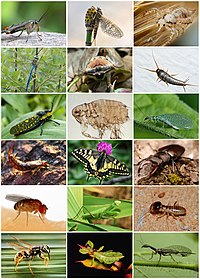
Photo from wikipedia
We exposed Blanchard's cricket frog (Acris blanchardi) tadpoles to atrazine in simulated aquatic communities (outdoor mesocosms) at nominal concentrations of 0, 1, 10, 100, and 200 μg/L and tracked the effects… Click to show full abstract
We exposed Blanchard's cricket frog (Acris blanchardi) tadpoles to atrazine in simulated aquatic communities (outdoor mesocosms) at nominal concentrations of 0, 1, 10, 100, and 200 μg/L and tracked the effects of exposure to spring emergence in the laboratory, as well as to reproductive age in outdoor, terrestrial enclosures. We tested hypotheses that 1) atrazine addition increases the prevalence and intensity of testicular ova (TO) among phenotypic males at metamorphosis and after overwintering, 2) atrazine reduces maturation of ova after overwintering among phenotypic females, and 3) atrazine alters mass, time, and survival to metamorphosis, as well as growth and survival across terrestrial life stages. Atrazine addition increased probability of TO presence at metamorphosis, but only when treatments were pooled and compared to the control, where background atrazine was detected. Atrazine did not influence the intensity of TO among metamorphs. We observed TO among males at spring emergence and at reproductive age regardless of exposure concentration. We found no evidence for effects of exposure on gonadal maturation among females after overwintering. Exposure to 200 μg/L reduced survival to metamorphosis, but atrazine did not affect mass at metamorphosis, time to metamorphosis, or survival or mass after overwintering. We demonstrate that atrazine addition can increase TO prevalence relative to background rates at metamorphosis and that TO are also present among phenotypic males after overwintering. We suggest that this non-model species is sensitive to effects of larval EDC exposures on gonadal development and morphology and that further work with cricket frogs is warranted.
Journal Title: Chemosphere
Year Published: 2019
Link to full text (if available)
Share on Social Media: Sign Up to like & get
recommendations!